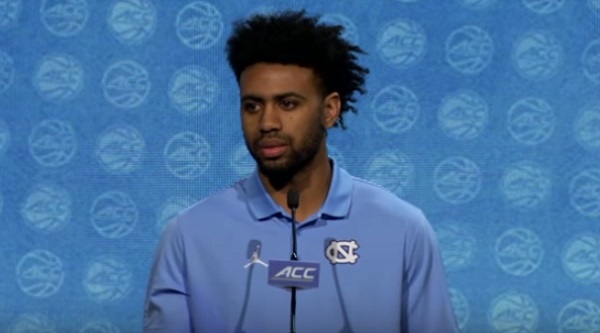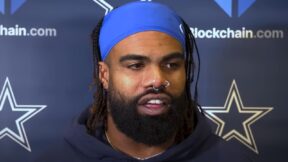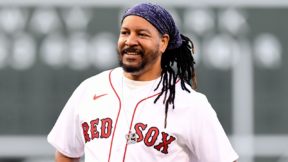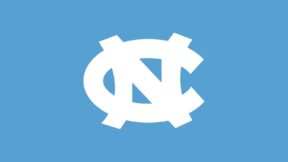5 Final Four X-factors to watch

Everyone knows about the stars of the Final Four — Justin Jackson, Nigel Williams-Goss, Sindarius Thornwell, and so on. But these aren’t just one-man teams, and there are lots of other factors, both on and off the court, that can impact how a team plays on any given night. The Final Four gets underway Saturday, with Oregon facing North Carolina, and Gonzaga taking on South Carolina.
Here are a few X-factors both on and off the court that could determine the success — or failure — of the four teams that will play for a spot in the championship game.
1) Coaching experience — or lack thereof
Entering the 2017 NCAA Tournament, this year’s Final Four coaches had a grand total of eight Final Four appearances. All of them belonged to Roy Williams.
Frank Martin, Dana Altman, and Mark Few had all coached in the Elite Eight, but much like their players, they are all Final Four rookies. In terms of experience, it’s all Williams — no contest. Williams is not only at his ninth Final Four, but he is also seeking his sixth career appearance in a title game.
If experience matters — and there is some evidence that it does — then Williams has a huge leg up.
Only twice since the turn of the century has a coach led his team to an NCAA title in his first Final Four appearance; Bill Self did it with Kansas in 2008, and Kevin Ollie’s Connecticut team followed in 2014. Every other championship coach since 2000 had been to at least one previous Final Four before grabbing their title. That is an advantage Williams will have against Altman’s Oregon in the national semifinal and, if they win that game, against whomever they face in the championship as well, be it Martin’s South Carolina team or Few’s Gonzaga squad.
2) Joel Berry’s ankles
North Carolina point guard Joel Berry played 33 minutes in Sunday’s victory over Kentucky, scoring 11 points. He knocked down just four of his 12 attempts from the field and none of his five three-point tries. Those are down numbers for a guy who averaged almost 15 points per game this season while shooting just under 40 percent from beyond the arc.
There’s a perfectly reasonable explanation for this — Berry sprained his left ankle early in that game. It was insult to injury, as he was already playing on a sprained right ankle that he’d suffered in the team’s opening round victory over Texas Southern.
The NCAA Tournament has given us only one glimpse of what the healthy, explosive Berry looks like, as he scored 26 points against Butler in the regional semifinal. He’s been able to battle through and his team has gotten over the finish line without him at his best, but in the Final Four, all hands on deck are a necessity.
Berry will have nearly a week to get himself as healthy as possible, and his health and effectiveness could go a long way toward determining whether the Tar Heels get past Oregon.
3) Gonzaga relieves the pressure — or do they?
The question is one that Mark Few must have grown utterly sick of fielding: “Can Gonzaga make it to a Final Four?” The Bulldogs, no longer a Cinderella, have been an NCAA Tournament mainstay since Mark Few became coach in 1999, having made the Big Dance every single year of his tenure. Twice they’d been a No. 1 seed, twice more a No. 2, and another two times they were a No. 3. Despite these high seeds and numerous opportunities, only once prior to 2017 had they made it past the Sweet Sixteen.
This year’s Gonzaga team not only made it into the Elite Eight, but they finally broke through into the Final Four for the first time in what has to be considered a watershed moment for the program. Now it will be intriguing to see how they respond.
The players may not have been around for long, but they’ve heard the questions about whether they are really that good or just chew through the weak WCC, get good seeds, and crash out of the tournament early. They’ve felt the pressure of delivering a Final Four appearance. Now, they’ve done that, though nobody’s suggesting they’ll be happy to just be there.
Will Gonzaga relax a bit and play without pressure now that they’ve put that question to rest, or will they find the moment overwhelming — especially now that some are citing them as the favorite to cut down the nets?
4) Can Dillon Brooks climb out of the back seat?
It feels rather silly including an All American on a list of X-factors, but Dillon Brooks hasn’t exactly set the world aflame this March. If it feels like you haven’t heard his name as much as you’d expect, it’s probably because you haven’t.
Oregon’s leading scorer during the regular season hasn’t paced the Ducks in any of their four March victories so far, with the tournament instead serving as something of a coming out party for Tyler Dorsey.
Indeed, it has been Dorsey leading the team in scoring every single game so far, with Brooks following in second or even third. In the Sweet Sixteen win over Michigan, Brooks was responsible for just 12 points in 36 minutes. He’s twice led the team in shot attempts, but they were inefficient performances that were in stark contrast to what Dorsey was doing, shooting a combined 10-for-15 from three in victories over Rhode Island and Kansas while going 18-for-23 from the field overall. In those same two games, Brooks was 14-for-38 — a 37 percent mark. Brooks has also looked agitated at times despite his team’s success.
It says a lot of great things about Dorsey and the rest of Oregon’s supposedly “supporting” cast, including forward Jordan Bell in particular, that the Ducks have made it this far without Brooks at his best, not to mention the loss of Chris Boucher before the tournament started. Now imagine if they have a game in which everyone else keeps up their high level of play but Brooks joins them, offering up a performance of which he is capable.
The Pac-12 Player of the Year hasn’t been bad by any means, but he’s almost operated in Dorsey’s shadow since the tournament tipped off. He could overwhelm North Carolina if he can step into the spotlight.
5) The rise of South Carolina’s supporting cast
Entering the NCAA Tournament, the South Carolina Gamecocks were seen as something of a one-man show led by Sindarius Thornwell, even to the most optimistic observers. Their other four starters — PJ Dozier, Duane Notice, Chris Silva, and Malik Kotsar — combined to average a somewhat meager 40 points per game. Thornwell alone averaged 21.6.
Make no mistake, Thornwell’s talent and South Carolina’s stifling defense are big reasons why they are where they are. You can’t win if you don’t score, though, and the Gamecocks’ supporting cast has outscored that 40-point mark in three of their four tournament games.
Dozier contributed 21 points in the first-round win over Marquette. Notice and Silva both dropped 17 in the stunning upset of Duke. Dozier again popped up with 17 in the comeback victory over Florida. Only against Baylor did the rest of the starters drop back to their regular season production levels, but it didn’t matter as much when the Bears were held to just 50 points.
Thornwell is South Carolina’s most important player. If he doesn’t play well, it’s extremely hard for them to win. However, he can’t do it all by himself, and the unheralded South Carolina supporting cast is vital to the team’s hopes of pulling yet another upset against Gonzaga.







